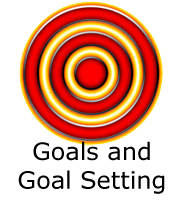Have you experienced a time in the past when you thought to yourself ‘I’m never going to understand this’ and then all of a sudden, you have a ‘lightbulb moment’, all the pieces just come together?
Many people give themselves w-a-y too hard a time when they’re learning new information. Learning anything for the first time, you are a beginner again.
It was a dude called Noel Burch who developed The Four Stages of Learning back in the 70’s: it is a model, a theory it offers up suggestions as to how we learn.
So before you get frustrated. Give up. Pull your hair out. Quit.
Here they are…
Stage 1: Unconscious incompetence
You don’t know what you don’t know.
Think of something that you’re really good at now, there will have been a time in the past where you knew nothing about it and were completely unware you needed to learn it.
Stage 2: Conscious incompetence
You know about it, but aren’t very good at it.
Driving is a perfect example of this. If you’re driver do you remember the learning, and how clumsy it was?
It’s during this stage you feel the learning is slow, because you’re consciously aware of all the mistakes you are making, you know you’re not good at it, yet!
However, this is the fastest learning stage. Your brain is making sense, creating clarity out of your felt confusion. Unknown to the conscious ‘you’, your brain is loving the new information (our brains love new things keep feeding it) and getting the information ‘down good’ for you.
Then comes stage three: Conscious competence
You know it well, you are still having to concentrate.
You have the learning, however you may feel that you are having to really focus and concentrate. This is a slower learning stage than stage two, the new learning is not yet habitual and consistent. Mistakes may still be made, however slow you may think it is, progress is still happening.
Stage 4: Unconscious competence
This is where the learning has become habitual and automatic. Your unconscious mind takes over, leaving your conscious mind free for something else.
So for drivers, consider the stage of conscious incompetence, when you had to focus your attention on all the detail. When you drive now, is it not possible you are able to drive, talk and listen to radio all at the same time? Your unconscious mind is on automatic. Have you ever driven from A to B, and you can’t remember the journey.
Okay, why am I sharing this with you.
Give yourself a break, cut yourself some slack.
If you are new to all this personal development melarkey, your brain needs a settling in period, it needs to create the new routes. Your always gaining, even if you feel it’s slow: it’s happening, you may not be aware on a conscious (the hear and now) of it taking place!
Stage 5: Mastery
Ever watched a ‘master’ at work? This is stage is beyond Stage 4, it’s the ‘flow’ state. Beautiful to watch.
 Goal, Plan, Action
Goal, Plan, Action